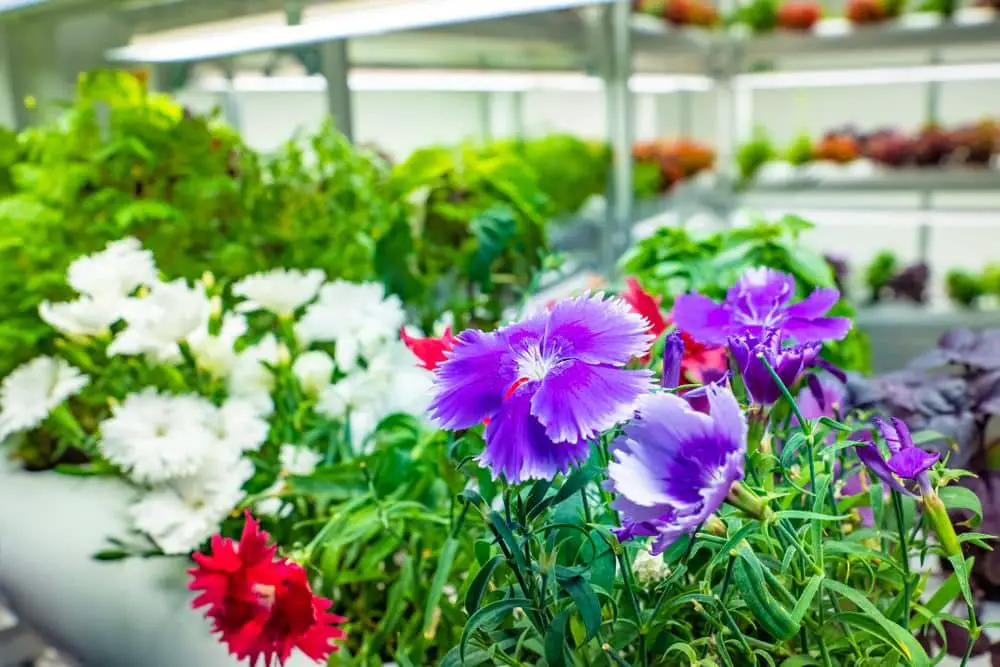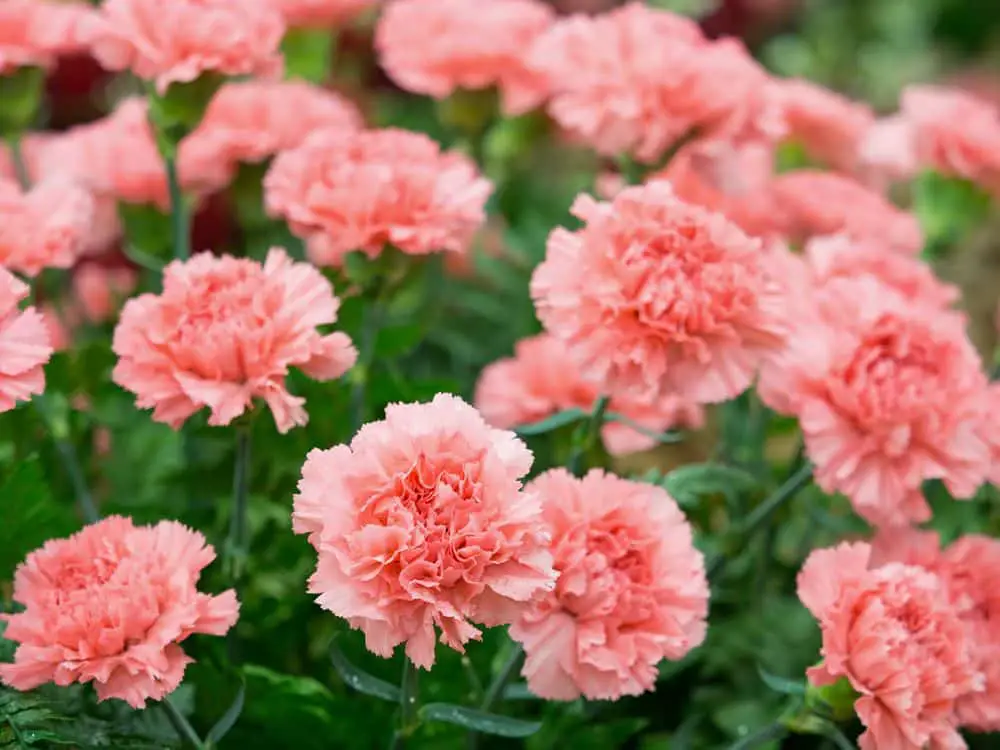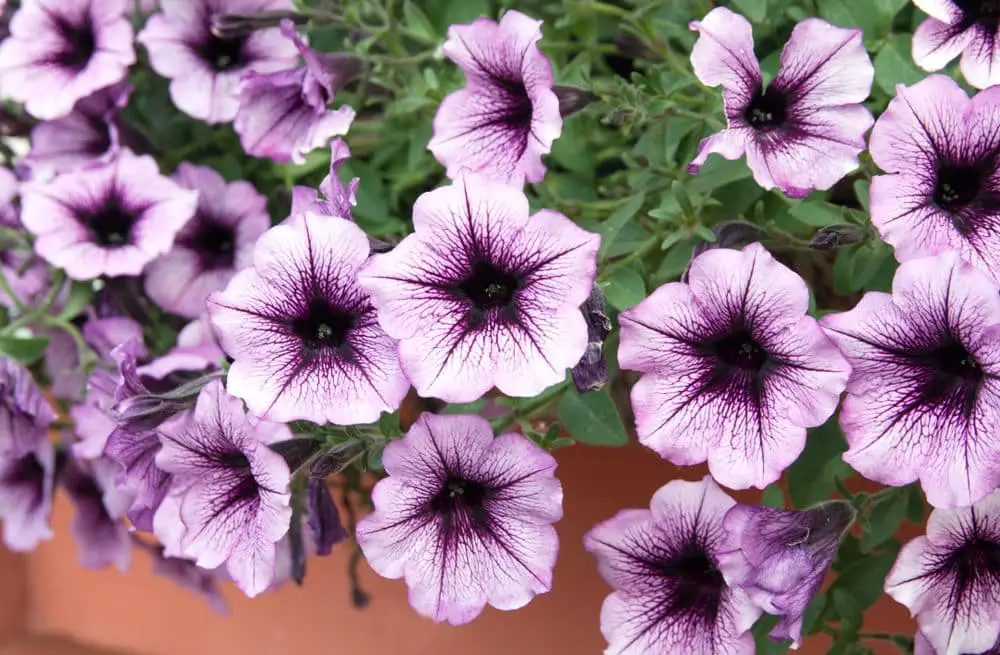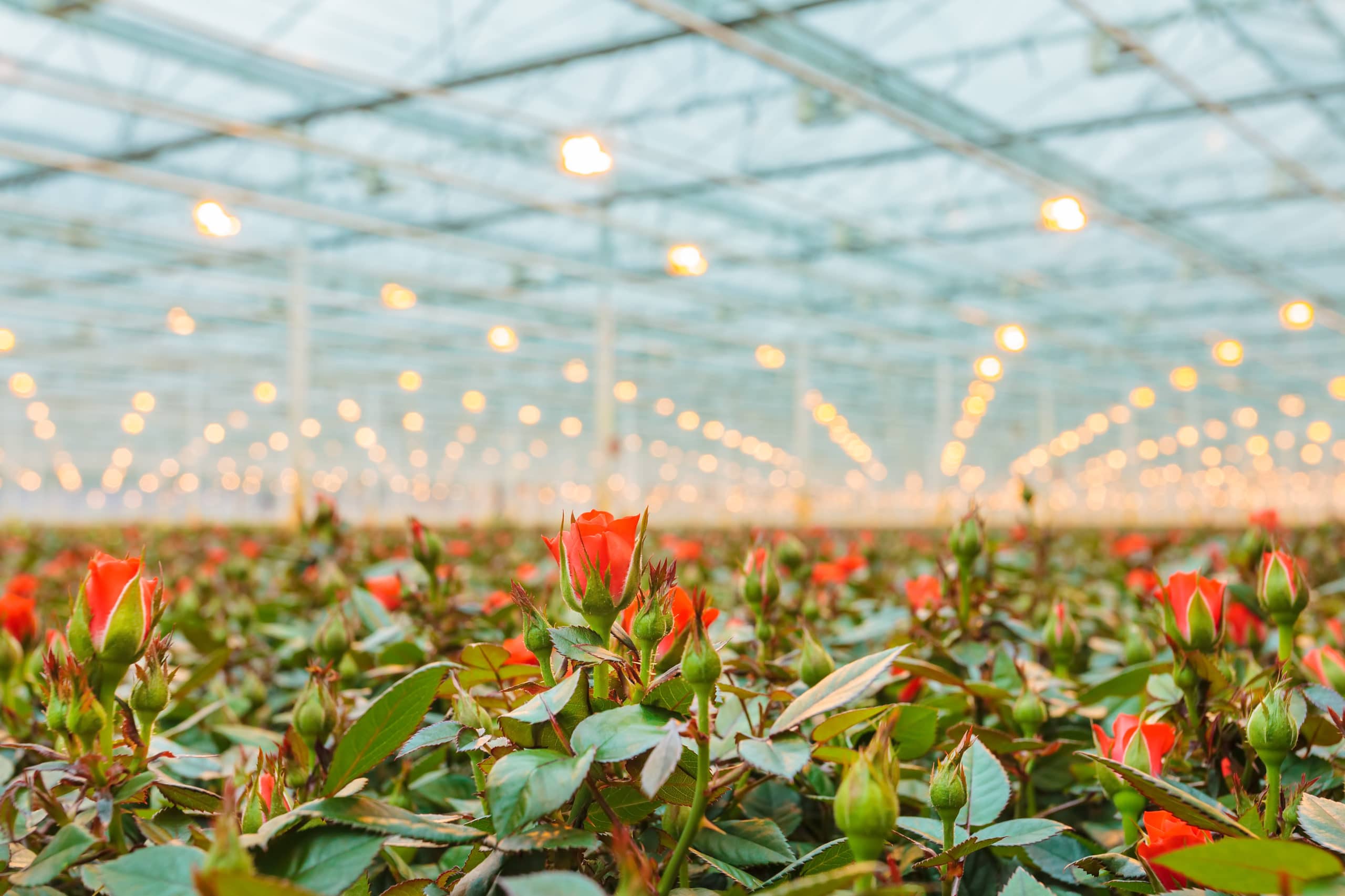Do you want to grow flowers? But what if you do not have land to grow your flowers?
Can flowers be grown hydroponically?
Yes, flowers can be grown hydroponically; any plant that grows in the soil can also grow in hydroponics! Because hydroponic systems are indoors, you can grow and produce flowers all year round.
Hydroponic gardening is known to give higher and faster yields than gardening in soil, flowers included. Truth is, some of the flowers you buy from your florist have been grown hydroponically.
Hydroponics is growing plants in water as an alternative to soil. Although hydroponics has been practiced since the ancient times, it is only during the last century that the science behind hydroponics has been fully studied and understood.
Growing flowers hydroponically is not just for professionals. You can grow flowers in your hydroponic garden as small as a shoe box at home. Flowers in your hydroponic garden, on average, will grow about five times faster than when planted in soil.
The question now is, which flowers can be grown hydroponically?
Benefits of Growing Flowers in a Hydroponic System
You can grow flowers even if you do not have an outside space for gardening. The hydroponic system allows you to do so. Planting without soil is not the only advantage of hydroponics.
system allows you to do so. Planting without soil is not the only advantage of hydroponics.
• It gives you full control of the pH balance and nutrient delivery to ensure the healthy growth of flowers.
• You do not need a big space to grow your flowers.
• There are no insects, weeds, or diseases to deal with.
All these benefits allow flowers to grow 50% faster in a hydroponic system than in soil. A greater yield of flowers is also assured.
Setting up a Hydroponic Flower Garden
The successful growth of flowers in a hydroponic system depends on the space and the growing facilities available. If you are growing flowers that grow to be large and tall, you will need a bigger container to avoid flowers from overcrowding.

If you are new to hydroponic gardening, it is a wise idea to buy a ready-made hydroponic setup. Hydroponic kits are readily available in stores.
If you want to set up a hydroponic garden, you will need:
• Growing container
• Water reservoir
• Growing media
• Hydroponic nutrients
• A pump (to recirculate water with the nutrients in the hydroponic system
• Flowering plants
The hydroponic nutrients and hydroponic media are two of the most essential elements of hydroponic growing.
Hydroponic Growing Medium
In the absence of soil, your hydroponic system needs a growing medium to anchor plants’ root systems. Some of the growing mediums used in hydroponics are similar to those used to amend the soil, such as rock wool, coconut fiber, perlite, or even sand.
Hydroponic Nutrients
Hydroponic nutrients include hydroponic fertilizers that come in powder or liquid form. They need to be diluted and added to the growing system as required. Hydroponic fertilizer mixtures contain organic ingredients similar to what you may add when planting in soil, such as earthworm castings, fish meal: blood meal, or kelp.
Trace minerals are also essential such as dolomite lime or sulfuric acid preparations.
Flowers Ideal for Hydroponic Gardening
Flowers add beauty and color to any garden. Hydroponic flowers do not only provide aesthetic value and aroma to your home. Many of them can be used for culinary and medicinal purposes.
1. Orchids
Many people regard orchids as one of the most beautiful flowers. Their colorful blooms and woody-thick roots make this flower a favorite of many gardeners. Many orchid lovers, though, are unaware that most orchid species grow well in a hydroponic system.
Orchids grow in the bark of trees and thrive in tropical climates. Since the environment is often wet, orchids are exposed to water from the rain. After the rain, the orchids’ roots are exposed to the air and can take in plenty of oxygen. Orchids also take their nutrients from rotten organic matters surrounding them.
These conditions are what a hydroponic system is all about. Growing orchids in a proper hydroponic system is easy and rewarding.
• The temperature in the hydroponic system should be between 600F and 800
• Hydroton pebbles or other media with enough drainage provide maximum airflow to the orchids’ root system.
• pH level should be between 5.5 and 6.5.
• Allow high levels of air circulation and humidity.
• Provide sufficient lighting such as a 400-watt high-pressure metal halide or sodium bulb.
Many people are shifting to hydroponics in growing orchids. Once your orchids start to bloom, place them on display around your home.
2. Carnations
Many people are growing carnations in hydroponic systems. Many homemakers also love having them as indoor decorations because they make homes feel so inviting, and their petals have a fantastic aroma.
Carnation seeds take about three weeks to propagate when planted in soil—growing carnations in a hydroponic system speed up the growing process.

• Carnations need at least 5 hours daily of uninterrupted sunlight.
• The temperature range should be maintained at 650F to 750
Perpetual flowering, border, and annual carnations are the most common types of carnations grown in hydroponic systems.
3. Hoya
Hoya flowers are star-shaped, and their leaves are smooth. There are over 200 species of Hoya, all with unique shapes and colors. Please choose the correct Hoya for hydroponic growing, and half the battle of nurturing and growing them has been won.
• Hoyas need sufficient drainage to avoid over-watering.
• Hoyas love indirect light.
• It is vital to maintain 500F to 770F of temperature.
• Maintain a 5.0 to 6.5 pH range
The Hoya plant is low in maintenance; it absorbs moisture through the air and grows well in a hydroponic system that uses humidity.
4. Dahlias
Growing Dahlias in a hydroponic system requires a lot of space. This flower grows wide and tall so that you will need a lot of lateral distance.
The container you will be planting Dahlias in should be not less than 12 inches deep. Choose the suitable Dahlia variety because some may need a deeper container which is no longer feasible for hydroponics growing.
• The growing medium you choose should dry out before your following watering schedule.
• They require at least 8 hours of light daily to grow and bloom.
• They require a 10-10-10 NPX mix fertilizer.
• Dahlias prefer warm temperatures of between 600 and 720.
• They need a 6.5 to 7.5 pH
Dahlias are octoploids, so they have eight sets of homologous chromosomes. They are closely related to Daisies, Chrysanthemums, and Sunflowers.
5. Snapdragons
Snapdragons are popular because of their flowers that, when pressed, look like a dragon and their vibrant colors. When mature, some snapdragon varieties can grow to be as tall as 48 inches, so the medium you choose in growing hydroponic snapdragons should provide firm support.
• Snapdragons require adequate watering but not moist conditions.
• The growing medium you choose should dry between the watering cycles.
• They require full sun and occasional shade.
• This flower requires a 6.2 to 7.0 pH level.
Snapdragons can be used for detoxification (clearing your body of wastes) by mixing them with your tea.
6. Zinnia
Zinnias are easy to grow. They grow to be between 4-inches to 49-inches tall. This means the growing medium for your zinnia hydroponics should be able to provide support for their roots.
• They need at least six hours of bright light or full sun daily.
• Choose the more compact Zinnia variety for your hydroponic growing.
• Zinnias love moist environments, but they do not like to be over-watered.
• They thrive on 5.5 to 7.5 pH levels
• They prefer temperatures of between 740F and 840
If you want a bushier Zinnia plant, pinch its growth tip while it is still young.
7. Petunia
Petunias come in endless colors, making them a garden favorite. They can grow to be as tall as four feet and as wide as three feet, so you will need a big container to avoid overcrowding and a suitable growing medium to support its root system.
•They need at least 6 hours of whole light daily to grow at their best.
at their best.
• They require warmer temperatures during germination.
• After germination, they love cooler temperatures of between 570F and 650

Petunias are annual plants, so they have a one-year complete life cycle.
8. Iris
Iris is an adaptable plant. They can grow in clay soil, swamps, or inside water plants. This makes it an ideal hydroponic flower. Some Iris species, such as the Iris tectorum, Iris variegata, or Iris versicolor are ideal for hydroponics growing.
9. Chrysanthemums
Many gardeners have grown Chrysanthemums in hydroponic setups with much success. Chrysanthemums can be planted through seeds or through propagation (cuttings).
Growing hydroponic Chrysanthemums is similar to hydroponic carnations. Chrysanthemums, though, have slightly different nutrient requirements from carnations. These plants need a pH level of 6.0 to 6,4.
Final Thoughts on Can Flowers be Grown Hydroponically? (Everything you Need to Know)
It is easy to start a hydroponic garden. The key to successful flowering hydroponics is to plan everything well.
It may be a bit costly to start a hydroponic garden. The initial cost, however, depends on the size of the hydroponic garden. The most important thing is to have the knowledge and understanding of managing a hydroponic garden effectively.
It may take some experience and time, but growing plants indoors successfully will be worth the time you spend on the learning curve.
Read More:
Can Flowers be Grown Hydroponically? (Everything you Need to Know)
How to Use Clay Pebbles for Houseplants
How to Kill Algae In Hydroponics
DWC Hydroponics for Beginners (The Complete Guide)

